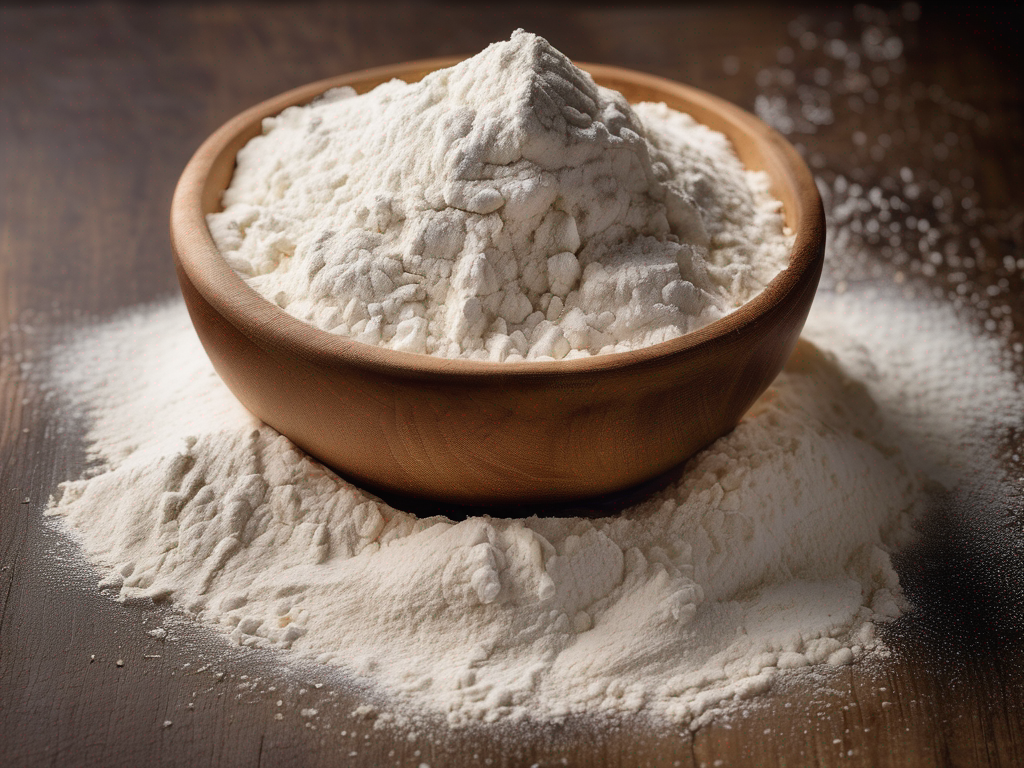
The Best Way to Store Flour to Keep it Fresh
Get Your Free Food Safety Cheat Sheet
30 most common foods with instant answers. Print it and stick it on your fridge—completely free!
The Best Way to Store Flour to Keep it Fresh
Flour is a staple ingredient in many kitchens, used for baking, cooking, and thickening sauces. However, improper storage can lead to spoilage, rancidity, or infestation by pests. To ensure your flour stays fresh and maintains its quality, it's essential to store it properly. In this blog post, we'll explore the best way to store flour to keep it fresh for longer. (Flour)
Why Proper Flour Storage is Important
Proper storage of flour is crucial for several reasons:
- Preserve Freshness: Storing flour correctly helps retain its freshness, flavor, and nutritional value.
- Prevent Spoilage: Flour can spoil due to exposure to moisture, heat, light, or pests.
- Avoid Contamination: Improperly stored flour can attract pests like weevils, insects, or rodents, contaminating the entire supply.
Factors Affecting Flour Freshness
Before delving into the best storage practices, let's understand the factors that can affect the freshness of flour:
1. Moisture
Excess moisture can cause flour to clump, develop mold, or become rancid. It's crucial to store flour in a dry environment to prevent moisture absorption.
2. Heat
High temperatures can accelerate the degradation of flour, leading to rancidity and loss of quality. Avoid storing flour near heat sources like ovens or stoves.
3. Light
Exposure to light can cause flour to deteriorate and lose its freshness. Store flour in a dark or opaque container to protect it from light exposure.
4. Pests
Flour is susceptible to infestation by pests such as weevils, ants, or rodents. Proper storage practices can help deter pests and protect your flour supply.
Best Practices for Storing Flour
Now that we understand the importance of proper flour storage let's explore the best practices to keep your flour fresh:
1. Choose the Right Container
- Use airtight containers made of glass, plastic, or metal to prevent exposure to air and moisture.
- Avoid storing flour in its original paper packaging, as it is not airtight and can easily tear or be punctured.
2. Select a Cool, Dark Location
- Store flour in a cool, dark pantry or cupboard away from heat sources like the stove or direct sunlight.
- Avoid storing flour near appliances that generate heat, such as the dishwasher or refrigerator.
3. Keep Away from Strong Odors
- Flour can absorb odors from strong-smelling foods like spices or onions. Store flour away from items with strong odors to prevent flavor contamination.
4. Check for Pests Regularly
- Inspect flour containers periodically for signs of pest infestation, such as small holes, webbing, or larvae.
- Consider placing a bay leaf or a piece of cinnamon stick in the flour container to repel pests.
5. Label and Date the Container
- Properly label the container with the type of flour and the date of purchase or expiration to track freshness.
- Use the oldest flour first to maintain freshness and prevent waste.
Conclusion
Proper storage is essential for maintaining the freshness and quality of flour. By following the best practices outlined in this blog post, you can ensure that your flour remains fresh, flavorful, and free from contamination. Remember to choose the right container, store flour in a cool, dark location, keep it away from strong odors, check for pests regularly, and label the container for easy identification. With these simple steps, you can enjoy fresh, high-quality flour for all your baking and cooking needs. (Flour)
Authoritative Food Safety References
These agencies and university labs inform every tip and health precaution we publish.
USDA FoodKeeper – Cold Storage Guidelines
Official refrigerator, freezer, and pantry timelines maintained by the U.S. Department of Agriculture.
Visit USDA FoodKeeperFDA Produce Safety Rule & Grower Guidance
Field-to-fridge handling practices that prevent contamination of fruits, vegetables, and leafy greens.
Visit FDA Produce SafetyCDC Foodborne Illness Prevention Hub
Surveillance-backed guidance on pathogens, symptoms, and steps to reduce foodborne illness risk.
Visit CDC Food SafetyUC Davis Postharvest Technology Center
University research detailing optimal storage atmospheres for produce after harvest.
Visit UC Davis PostharvestPenn State Extension – Home Food Preservation & Safety
Peer-reviewed extension bulletins on safe canning, chilling, and reheating practices.
Visit Penn State ExtensionGet Your Free Food Safety Cheat Sheet
30 most common foods with instant answers. Print it and stick it on your fridge—completely free! Want more? Upgrade to the complete guide with 70+ foods.
Scan your food directly and get instant safety info using our AI-powered camera feature.